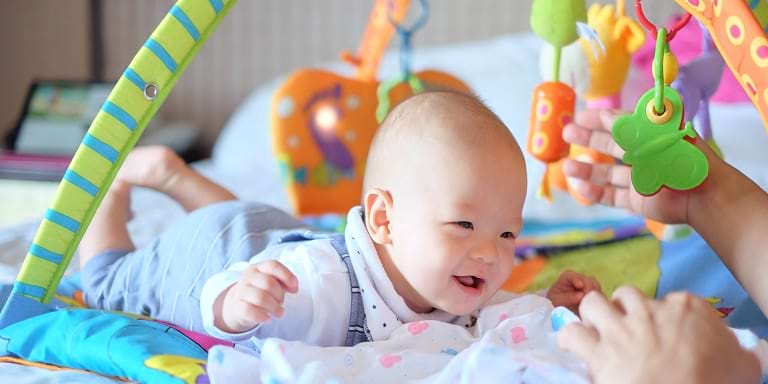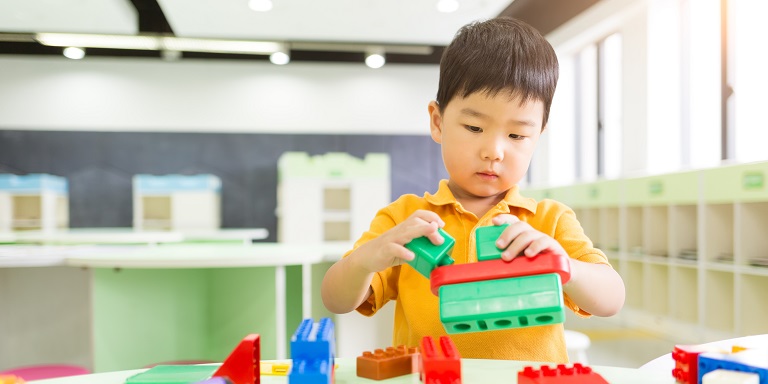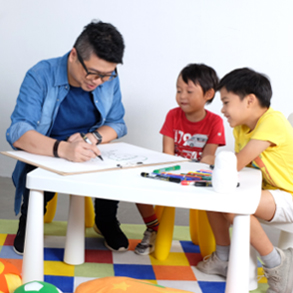To give kids an early advantage, other than academic achievement, parents should also take into account their children’s physical development and emotional intelligence management. Every child is playful by nature, and it is important for parents to make good use of these “prime times” for brain development (0-6 years old) and select the right toys to boost their children’s IQ and EQ.
Game-based learning is a much more effective way to increase children’s learning motivation than the spoon-feeding approach. According to the findings of the Department of Health1, children experience the most rapid and drastic development before the age of 6 (especially between 0 and 2 years old). Parents should allow their children to explore freely, encourage more parent-child interactions, and conduct various activities to promote healthy growth. This prime time is particularly important for the development of their abilities in learning, thinking and socializing.
Parents should choose the right games and toys that meet the growth needs of their infants and toddlers2:
0-1 years old: Cognitive development
By the time your kids reach four months old, they can more or less coordinate different senses, such as vision, touch and hearing. Parents can start to give them colorful toys that are made from different materials or those that can make a unique variety of sounds (such as rattles). When they grow a bit older, parents can even read colorful picture books or story books with/to them.

1-2 years old: Physical development
As your toddlers’ dexterity improves, they can stack four or more blocks together to make a small tower or do some doodling using colour pens. Now parents can give them different kinds of balls to play with, as the action of kicking and throwing is an effective way to train their muscles. Other suitable games/toys include dolls, toy animals, toy phones, playing house and all sorts of plastic household items (great for both boys and girls).
2-3 years old: Intelligence development
With their intelligence, language, social skills and emotional intelligence growing in leaps and bounds, kids can now draw vertical and horizontal lines, string beads and turn books page-by-page. Parents should pick some toys that can inspire their creativity, such as building blocks, Play-Doh, simple puzzles and matching toys, and encourage them to solve different problems through trial and error.

3-4 years old: Explore around
Going into their pre-school years, your kids are now enjoying their “playtime”. Parents should allow them to play with toys that can inspire their creativity, such as building blocks and Play-Doh, or provide colour pens, paints, and other art and craft supplies for them to create their own masterpieces.
4-6 years old: Develop social skills
Children who are attending kindergarten (between the age of 4 and 6) can skillfully climb up/down the stairs on their own, and do all sorts of climbing in playgrounds. With improved manual dexterity, they now do a much better job when filling in their coloring books or drawing portraits of their friends. Parents should encourage them to play with various kinds of balls to get the exercise they need to enhance their physical strength and vent their emotions. Parents should also read with their kids to help them develop an interest in reading.
All children develop at their own pace and in their own way. Games/toys play a vital role in children’s growth, and failure to choose the right toys for your kids may affect their IQ and EQ development. According to international research, excessive dependence on electronic toys/smart devices could negatively impact children in a number of ways, such as impeded motor development and language skills acquisition, and imitation of bad behaviors (including violence), as well as affecting their quality of sleep, level of concentration, and social and communication skills.3
To make sure your kids can grow up in a happy and healthy environment, it’s important for parents to choose the right financial products for their education.
Sources:
1&3 Does your 0 to 5-year-old child need electronic screen products?
2 Child Development 8B - Four to Six years
Information provided above is for reference only, please refer to the Conditions of Use of this site.



